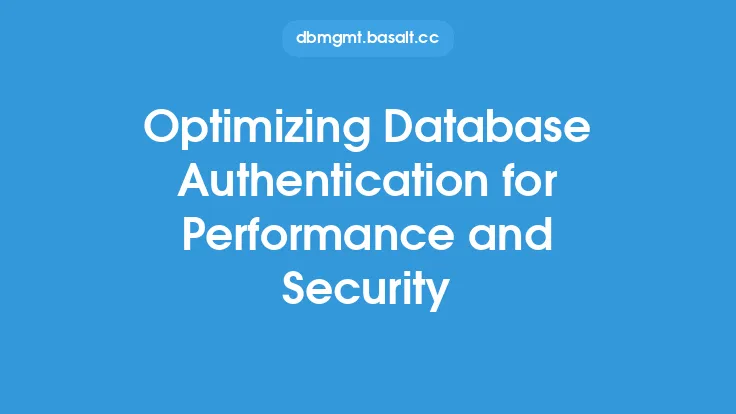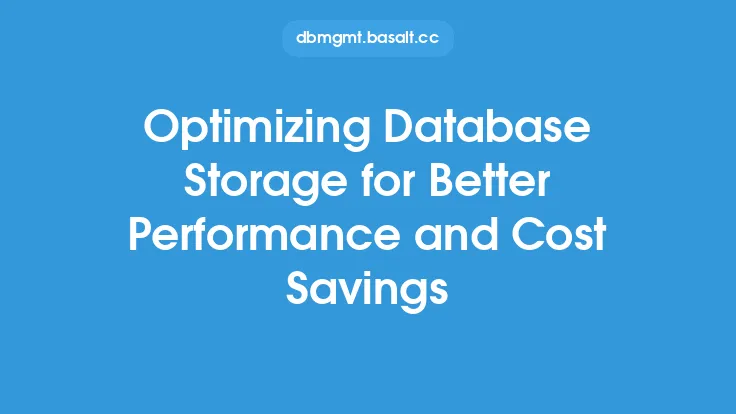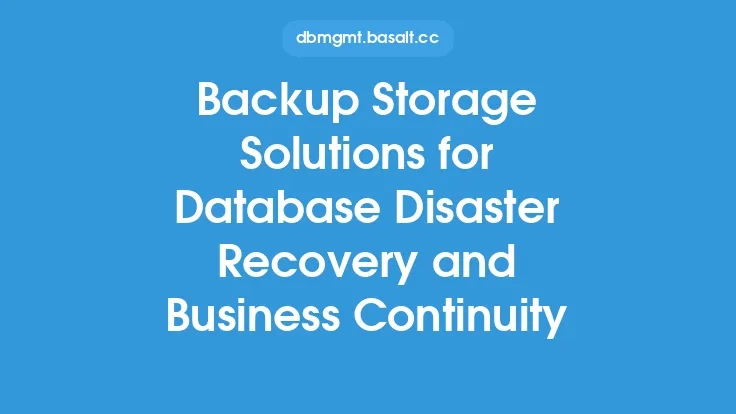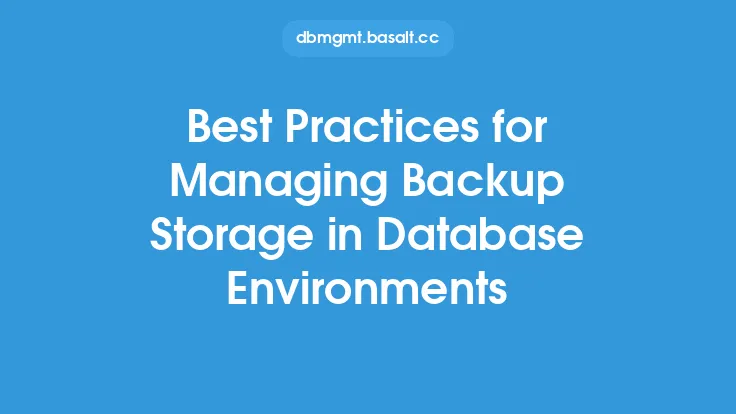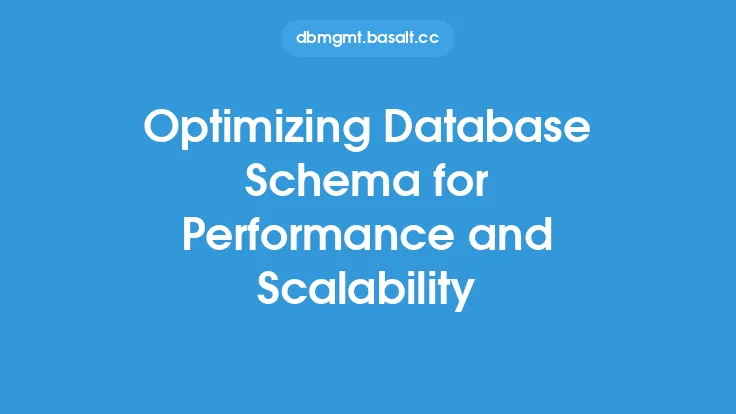When it comes to database performance and security, optimizing backup storage is a critical aspect that cannot be overlooked. A well-designed backup storage system is essential for ensuring the integrity and availability of database data, as well as for meeting regulatory and compliance requirements. In this article, we will delve into the details of optimizing backup storage for database performance and security, exploring the key considerations, best practices, and technical aspects that database administrators and IT professionals need to be aware of.
Introduction to Backup Storage Optimization
Backup storage optimization is the process of configuring and managing backup storage systems to achieve the best possible performance, security, and reliability. This involves selecting the right storage media, designing an efficient backup architecture, and implementing data deduplication, compression, and encryption techniques. The goal of backup storage optimization is to minimize the time and resources required for backup and recovery operations, while ensuring that database data is properly protected and readily available in the event of a disaster or data loss.
Key Considerations for Backup Storage Optimization
There are several key considerations that database administrators and IT professionals need to take into account when optimizing backup storage for database performance and security. These include:
- Data growth and retention: As database data grows, so does the need for backup storage capacity. It is essential to plan for future data growth and retention requirements, ensuring that the backup storage system can scale to meet increasing demands.
- Recovery time objectives (RTOs) and recovery point objectives (RPOs): RTOs and RPOs define the maximum allowable downtime and data loss for a database, respectively. Backup storage optimization must take into account these objectives, ensuring that backup and recovery operations can be completed within the specified timeframes.
- Data security and encryption: Database data must be properly secured and encrypted, both in transit and at rest. Backup storage optimization must include the implementation of robust security measures, such as encryption, access controls, and authentication.
- Storage media and technology: The choice of storage media and technology can significantly impact backup storage performance and security. Options include disk-based storage, tape storage, and cloud-based storage, each with its own advantages and disadvantages.
Best Practices for Backup Storage Optimization
To optimize backup storage for database performance and security, database administrators and IT professionals should follow best practices such as:
- Implementing a tiered backup architecture: A tiered backup architecture involves using multiple storage media and technologies to store backup data, with the most critical data stored on the fastest and most reliable media.
- Using data deduplication and compression: Data deduplication and compression techniques can significantly reduce the amount of storage required for backup data, improving storage efficiency and reducing costs.
- Encrypting backup data: Encrypting backup data ensures that it is properly secured and protected from unauthorized access, both in transit and at rest.
- Monitoring and testing backup operations: Regular monitoring and testing of backup operations are essential for ensuring that the backup storage system is functioning correctly and that data can be recovered in the event of a disaster or data loss.
Technical Aspects of Backup Storage Optimization
From a technical perspective, backup storage optimization involves a range of complex considerations, including:
- Storage area networks (SANs) and network-attached storage (NAS): SANs and NAS are commonly used to provide high-performance storage for backup data. However, they require careful configuration and management to ensure optimal performance and security.
- Cloud-based backup storage: Cloud-based backup storage offers a range of benefits, including scalability, flexibility, and cost-effectiveness. However, it also introduces new security and compliance risks that must be carefully managed.
- Backup software and tools: Backup software and tools, such as Veritas NetBackup and Veeam Backup & Replication, play a critical role in backup storage optimization. They provide a range of features and functions, including data deduplication, compression, and encryption, that can help to improve backup storage efficiency and security.
Conclusion
Optimizing backup storage for database performance and security is a complex and challenging task that requires careful planning, configuration, and management. By following best practices, considering key factors such as data growth and retention, RTOs and RPOs, data security and encryption, and storage media and technology, database administrators and IT professionals can ensure that their backup storage systems are properly optimized for database performance and security. Additionally, by staying up-to-date with the latest technical developments and advancements in backup storage technology, organizations can ensure that their database data is properly protected and readily available in the event of a disaster or data loss.
